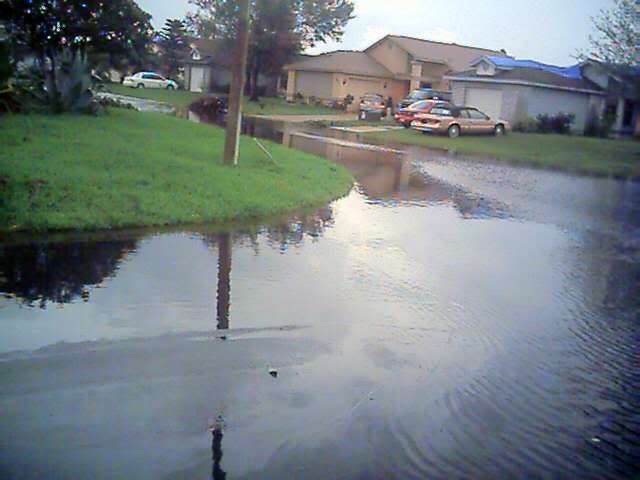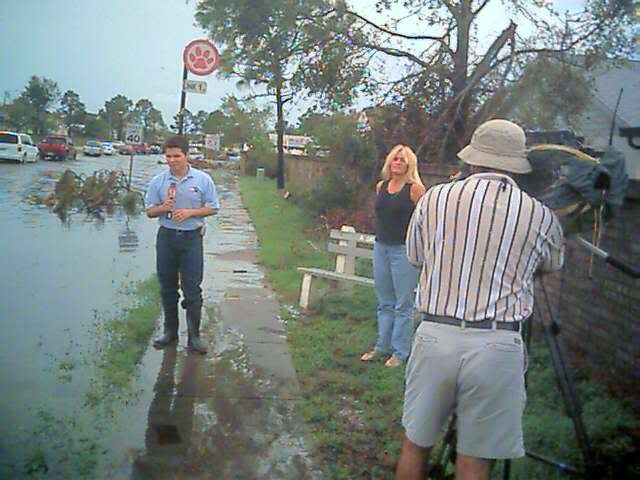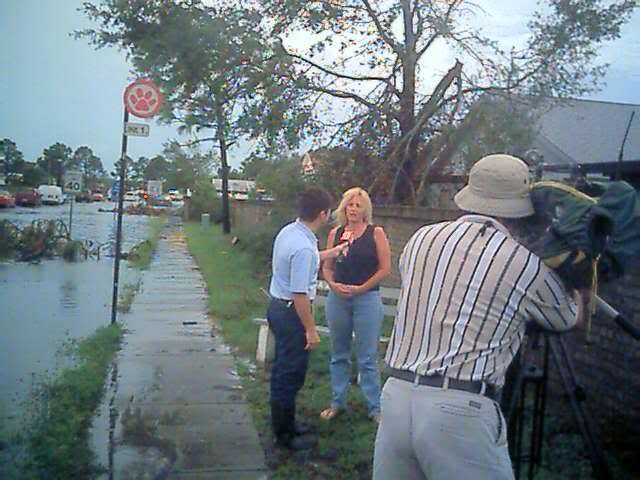Frances Leaves 6 Million Without Power, Two Dead
UPDATED: 03:58 pm EDT September 6, 2004
FORT PIERCE, Fla. -- Weakened but persistent, Tropical Storm Frances took aim at the Florida Panhandle on Monday after the former hurricane left behind flooding and torn rooftops throughout a wide swath of central and southern Florida. About 6 million people lost power and at least two people were killed.
More than 13 inches of rain fell along Florida's central east coast, flooding some areas 4 feet deep, before Frances entered the Gulf of Mexico late Sunday. In its wake, the storm left boats mangled, trees and power lines toppled and gas tanks running on empty because of tapped out service stations.
"Our message is turn around, don't drown. If you do not have to travel, don't do so," state meteorologist Ben Nelson said Monday, warning of possible storm surges of up to 10 feet. Lt. Gov. Toni Jennings said officials were working to get fuel from reopened ports to emergency workers and gas stations.
Not everyone heeded the warning, even as rain began falling heavily Monday in the Panhandle. Tamara Suarez decided to open the Cafe Con Leche in the historic fishing and oyster village of Apalachicola because "it's better to be here than at home, just waiting and waiting and waiting."
As northern Florida residents awaited Frances, residents in hard-hit areas began the arduous task of cleaning up. Rhoda Siegel was the first in line at a Home Depot in Port St. Lucie early Monday, trying to buy tarps, batteries and a generator.
"I feel very, very fortunate. ... It's just a house," the retiree said about the relatively light damage it suffered.
In the Miami area, which was spared the worst of the storm, businesses started to pull down shutters and reopen. Cruise ships packed the Port of Miami after they were stuck out at sea during the storm. On Ocean Drive in Miami Beach, hotels and bars welcomed the few tourists and residents who ventured out.
"I think we're going to have a lot of people who were cooped up and want to have a drink," said Mike Palma, general manager of the Clevelander Hotel, famous for its bikini contests and poolside bar.
Initial reports of destruction did not appear to approach the estimated $7.4 billion in insured damage wreaked by Hurricane Charley in southwest Florida three weeks ago. Frances' path overlapped with some of the area hit by Charley, which killed 27 people. One risk-assessment company estimated insured losses could range from $2 billion to $10 billion.
"If it's the same all the way across, we're looking at a couple of billion dollars rather than the big numbers we were seeing earlier," said state Chief Financial Officer Tom Gallagher, who oversees the insurance industry.
Parts of downtown Tampa were flooded Monday. In Daytona Beach, one of the hardest-hit cities, roofs were torn off the Peabody Auditorium, where the London Symphony Orchestra appears annually, and several smaller motels. Parking lots were flooded. And the sign across the coastal highway proclaiming Daytona "The World's Most Famous Beach" was destroyed. Most of the city and about a third of the state's residents remained without power.
The National Hurricane Center said Frances showed signs of redeveloping into a hurricane before striking the Panhandle. New evacuations began in four Panhandle counties amid fears that the storm would spur flooding.
At 11 a.m. Monday, Frances remained a tropical storm, with top sustained winds near 65 mph and its center about 60 miles east-southeast of Apalachicola. The storm moving northwest at about 8 mph on a track that would make landfall in the Panhandle later in several hours.
"We really are hopeful that the winds won't be too severe -- or the rain," said Scott Paterna, who raced to board up his bait and tackle shop near St. Marks, about 20 miles south of Tallahassee.
Bands of rain and high winds covered much of the state's center Sunday, spoiling Labor Day weekend for the length of the state's 430-mile east coast from the Keys to Jacksonville and along the Georgia coast. After passing through the Panhandle, Frances will move into Georgia and Alabama. Its effects were felt as far north as New Jersey, with riptides and rough surf complicating weekend plans.
The storm was blamed for at least two deaths in Florida -- both in the Gainesville area. A 28-year-old man was killed when his car struck a tree and a woman in her 60s was killed in her living room when an oak tree crashed onto her mobile home Sunday. There were two earlier deaths in the Bahamas, where thousands were forced from their homes.
Gov. Jeb Bush surveyed damage Sunday in the West Palm Beach area with state and federal emergency officials. He said it was too early to assess the extent of the devastation. Many counties began damage assessment Monday morning.
President Bush spoke with his brother on Sunday afternoon and assured Floridians that federal resources were in place to help respond to the disaster, a White House spokesman said.
Frances tattered numerous mobile homes and made a mess of marinas, throwing dozens of pleasure boats against the shore or on top of each other. The small town of Dundee in Polk County needed a generator to provide water to its 2,600 residents.
After two hurricanes and a tornado during her first two months in Daytona Beach, 62-year-old Janet LeClair, a recent arrival from Boston, wondered if her mobile home would make it.
"It's a single-wide and I think it's going to be blown to Kansas and my car with it," LeClair said.
Some 8,000 members of the National Guard were assigned to recovery efforts. Eleven suspected looters were arrested in Palm Beach, Orange and Indian River counties.
Once a Category 4 hurricane with winds of 145 mph, Frances slowed and weakened to a Category 2 storm as it neared Florida. Winds receded to a peak of 105 mph before it made landfall at Sewall's Point, north of Palm Beach. One gust was clocked at 115 mph. By late Sunday, Frances had been downgraded to a tropical storm.
At one point, about 2.8 million residents in 40 counties were told to evacuate from coastal areas, barrier islands, mobile homes and low-lying areas. The largest evacuation in state history sent 88,000 people to emergency shelters, while others stayed in hotels or with friends or family members.
Airports in Miami, Fort Lauderdale and Martin County reopened, and Orlando's airport expected to reopen Monday, but Tallahassee International Airport was closed as Frances approached the Panhandle. Northbound Interstate 95 was closed in Palm Beach County because part of the major highway along Florida's east coast washed out. In the Tampa-St. Petersburg area, authorities closed the Sunshine Skyway Bridge across Tampa Bay because of high winds.
Police blocked access to Palm Beach County's barrier islands, including Palm Beach and Singer Island, and enforced a 24-hour curfew. Officials said roads were too dangerous for travel.
Also Sunday, at the peak of the hurricane season, Ivan became the fifth hurricane of the year in the central Atlantic. Its center was about 435 miles east-southeast of Barbados and had top sustained winds near 125 mph. Under current projections, Puerto Rico and Barbados are in the storm's path. Officials said it was too soon to say whether Ivan would hit the United States.
But Anne Bruno had already made up her mind after leaving her Palm Bay house to avoid Frances.
"And we got another one coming? I'm staying home. No money, no gas and stuck inside with a mother-in-law for four days, no way."







